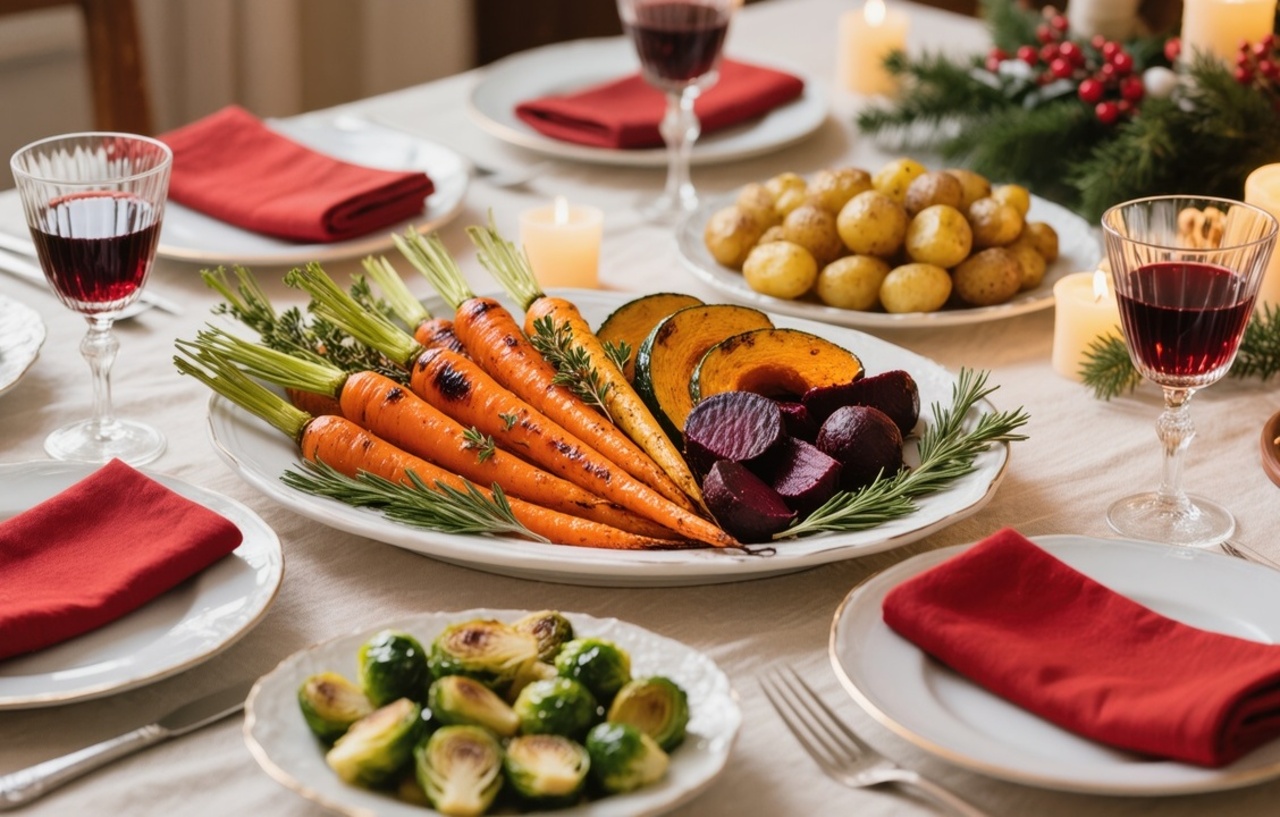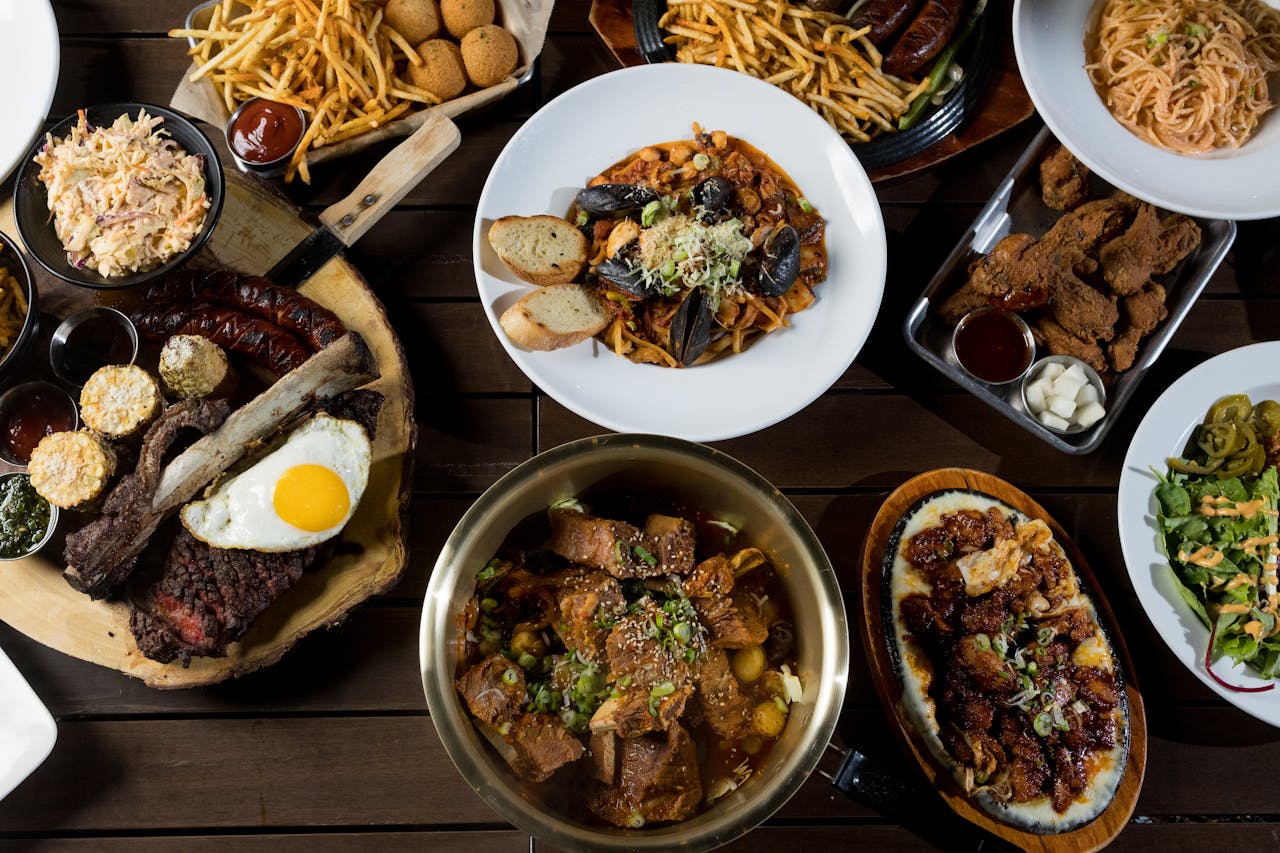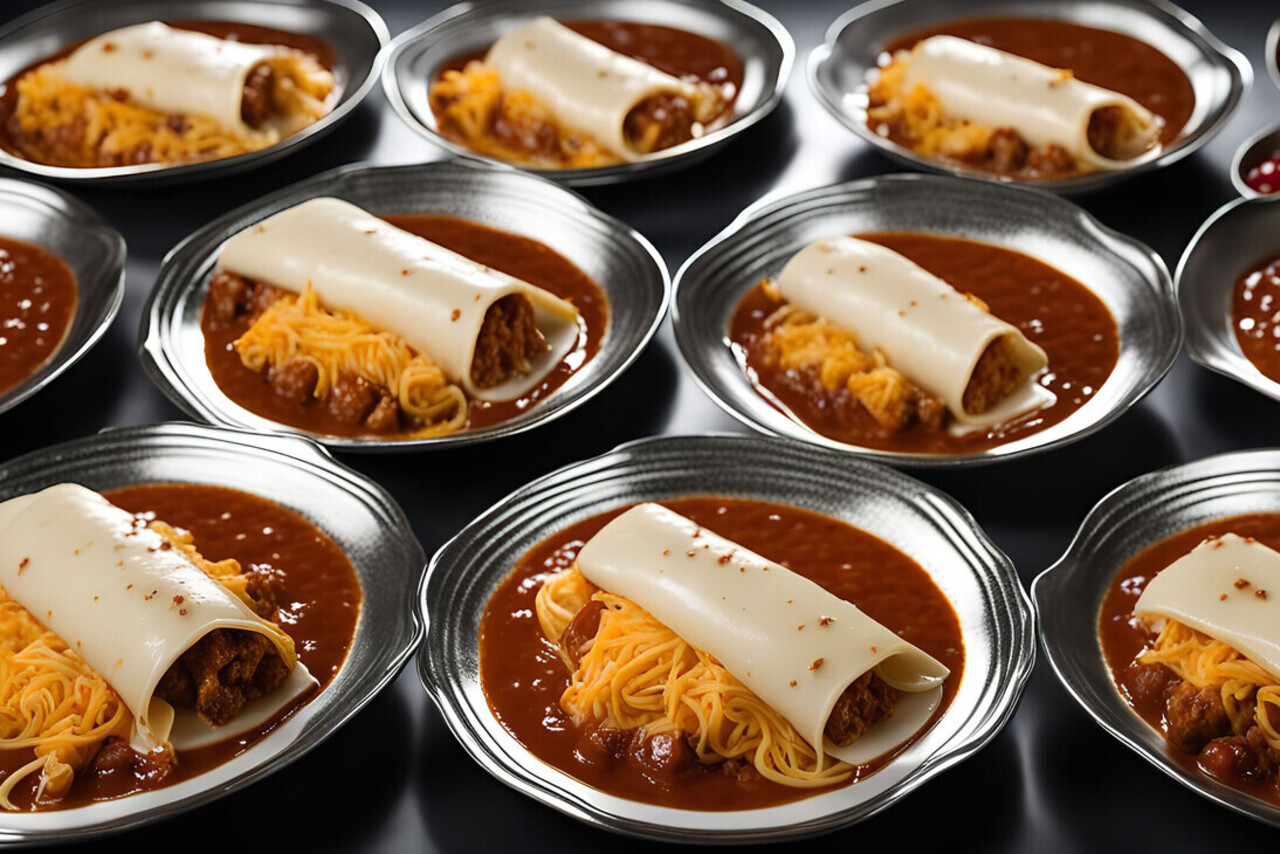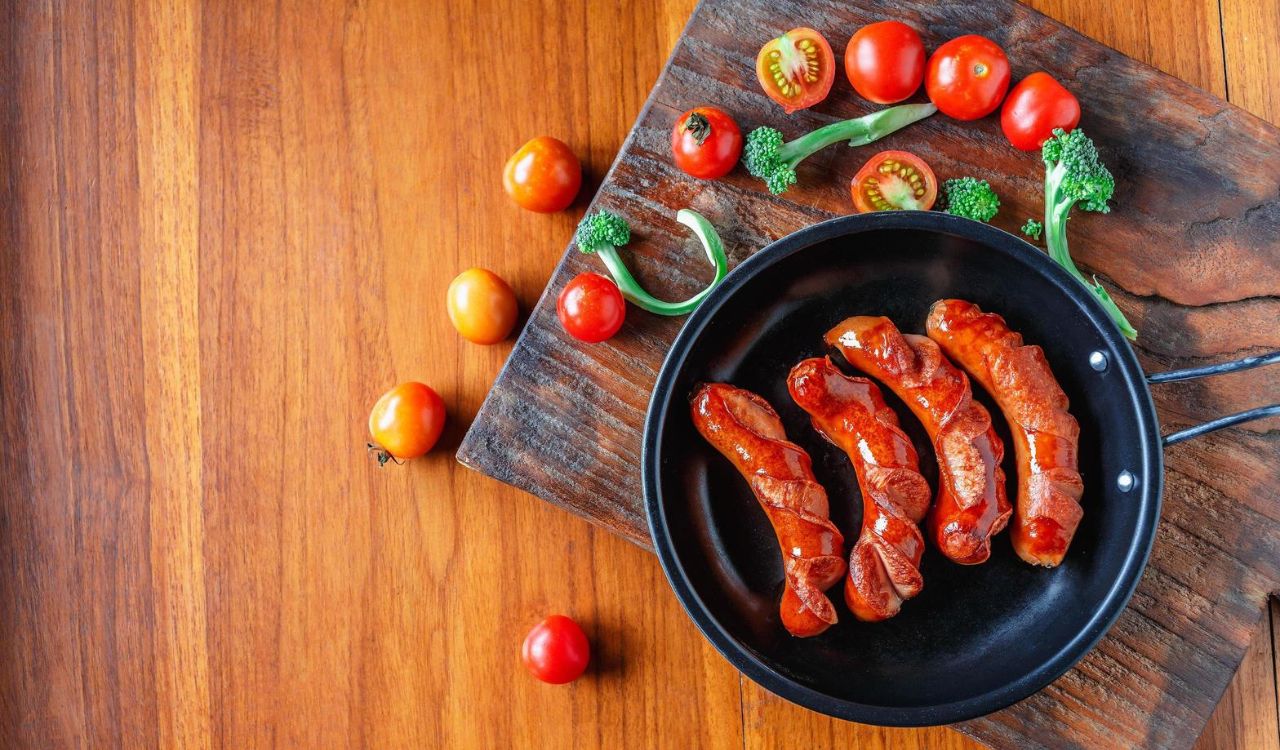15 Essential Italian Dishes to Savor on Your Next Foodie Trip
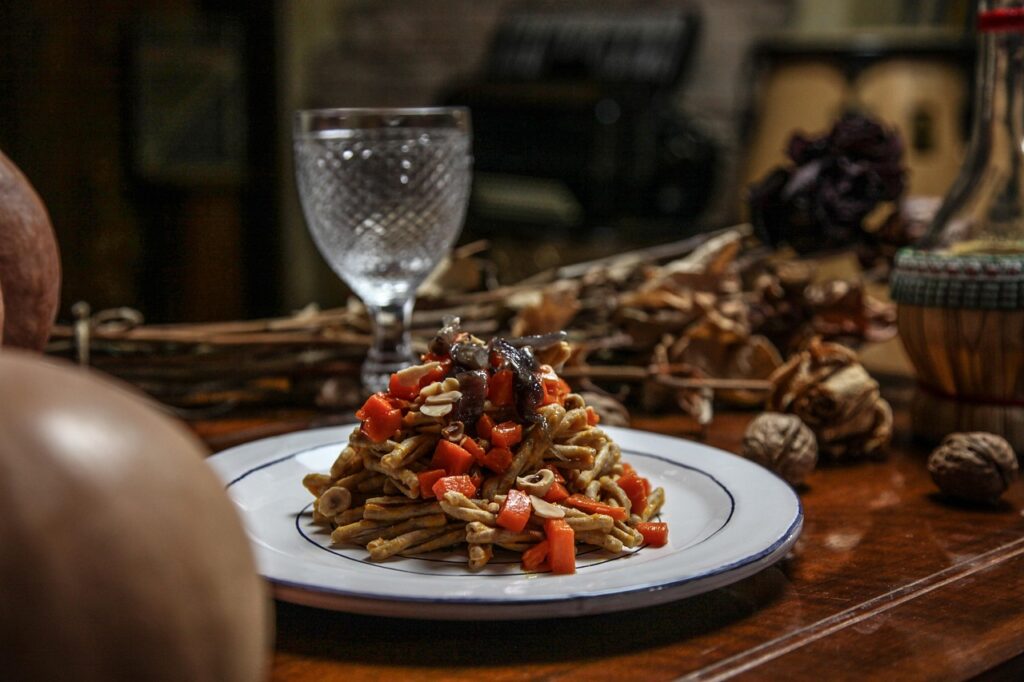
A trip to Italy is as much about eating as it is about sightseeing. Every region showcases specialties shaped by history, geography, and local ingredients. In the north, you’ll find buttery risottos and rich cheeses, while the south bursts with tomatoes, herbs, and olive oil. Along the coasts, fresh seafood dishes shine, and in the mountains, hearty stews bring warmth. The true beauty of Italian cuisine lies in its simplicity: quality ingredients prepared with care, celebrating flavor above all.
1. Margherita Pizza
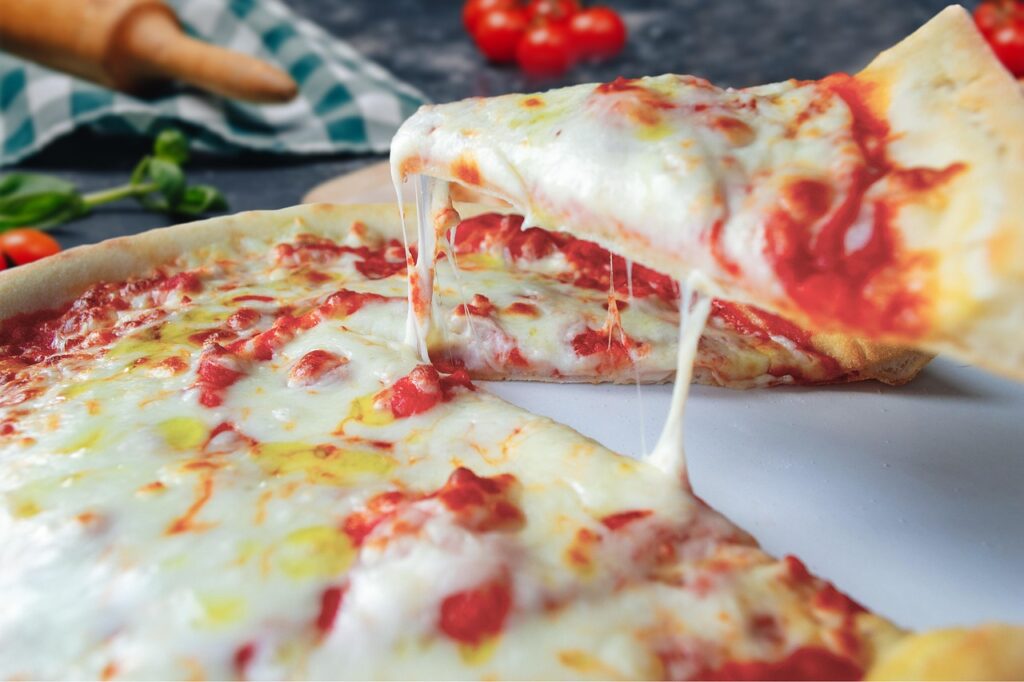
Born in Naples, the Margherita pizza is a perfect example of how simple ingredients can create magic. With its thin, chewy crust, vibrant tomato sauce, creamy mozzarella, and fresh basil, it’s a dish that celebrates balance and freshness. The colors even match the Italian flag; a nod to its patriotic origin. While you can find pizza all over the world, tasting a true Neapolitan version baked in a wood-fired oven is a completely different experience. The slight char on the crust, the tang of the tomatoes, and the milky melt of the cheese come together in every bite. In Italy, this isn’t just food; it’s tradition served on a plate.
2. Risotto alla Milanese

A creamy, golden-hued rice dish, Risotto alla Milanese is a specialty of Milan. The secret to its color and aroma is saffron, which infuses the rice with a subtle floral note. Made by slowly adding broth to Arborio rice and stirring constantly, the texture becomes luxuriously creamy without any cream added. Traditionally served alongside ossobuco, it’s also satisfying on its own. The richness of the butter, the slight bite of the rice, and the fragrance of saffron make this dish stand out. It’s a true comfort food that reflects northern Italy’s love for butter over olive oil and an emphasis on indulgent, slow-cooked meals.
3. Lasagna alla Bolognese

Lasagna in Italy differs from the heavily layered, cheese-rich versions abroad. The Bolognese style uses fresh pasta sheets with a slow-cooked ragù made from meat, vegetables, wine, and just a little tomato, combined with creamy béchamel and Parmigiano-Reggiano. The result is balanced and refined, where pasta, sauce, and meat melt together seamlessly. It reflects Emilia-Romagna’s culinary artistry, hearty enough for comfort yet elegant in its restraint and flavor harmony.
4. Ossobuco

Ossobuco, meaning “bone with a hole,” is a Milanese classic of braised veal shanks simmered in broth, wine, onions, carrots, and celery. Some traditions use white wine alone, while others add tomato for richer depth, but both produce tender, fall-apart meat. The marrow inside the bone is the true delicacy, often spread on bread. Traditionally served with Risotto alla Milanese, ossobuco captures Italian comfort with simple ingredients transformed into a soulful, satisfying dish.
5. Carbonara
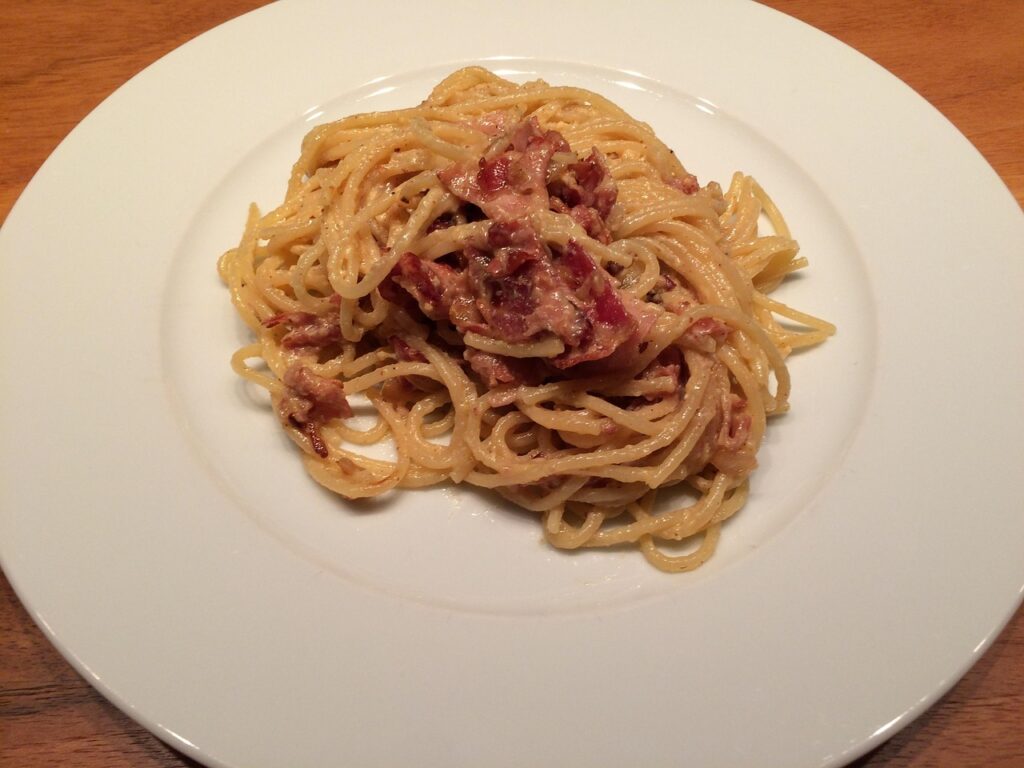
True Roman carbonara is made without cream, relying on eggs, Pecorino Romano cheese, guanciale, and black pepper to create a silky sauce. The heat from the pasta cooks the eggs just enough to coat each strand, resulting in a dish that’s rich but not heavy. The salty bite of the guanciale contrasts with the creamy texture, while freshly cracked pepper adds warmth. It’s quick to prepare but deeply satisfying; a perfect example of Italian cooking’s less-is-more philosophy. Done right, carbonara is indulgent without being overcomplicated, making it a dish that’s as at home in a family kitchen as it is in a fine Roman trattoria.
6. Focaccia
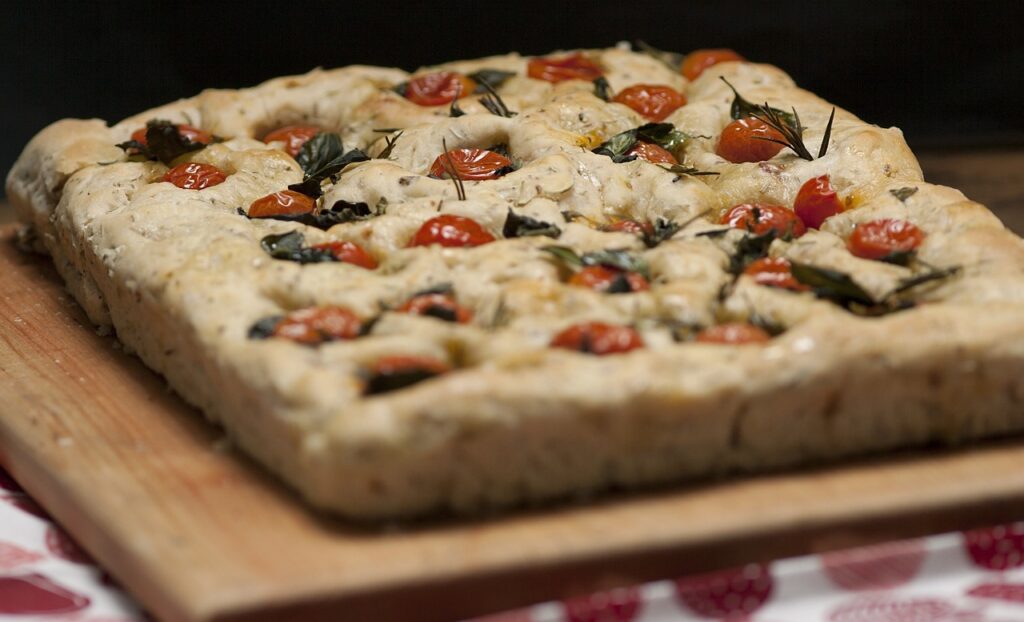
Focaccia is more than just bread; it’s a canvas for flavor. Originating from Liguria, this fluffy, olive oil–rich bread is often topped with herbs, olives, onions, or tomatoes. The inside stays soft and airy, while the outside develops a golden, slightly crisp crust. Focaccia can be enjoyed as a snack, an appetizer, or alongside soups and salads. In Italy, you’ll find regional variations, from thin and crunchy to thick and pillowy. It’s simple but addictive, proving that when you start with great olive oil, fresh herbs, and a well-made dough, you don’t need much else. Every bite is a taste of coastal Italian warmth.
7. Tagliatelle al Ragù

Hailing from Bologna, tagliatelle al ragù is often mistakenly called “spaghetti bolognese” outside Italy. The authentic version pairs fresh, flat ribbons of tagliatelle with a slow-cooked meat sauce made from beef, pork, vegetables, wine, and a touch of tomato. The wide noodles hold the sauce beautifully, allowing each bite to deliver a perfect balance of flavors. The dish is hearty but elegant, with layers of taste that come from hours of simmering. In Emilia-Romagna, it’s a staple for Sunday family meals, representing the tradition of gathering around the table for food made with care and time.
8. Gnocchi di Patate
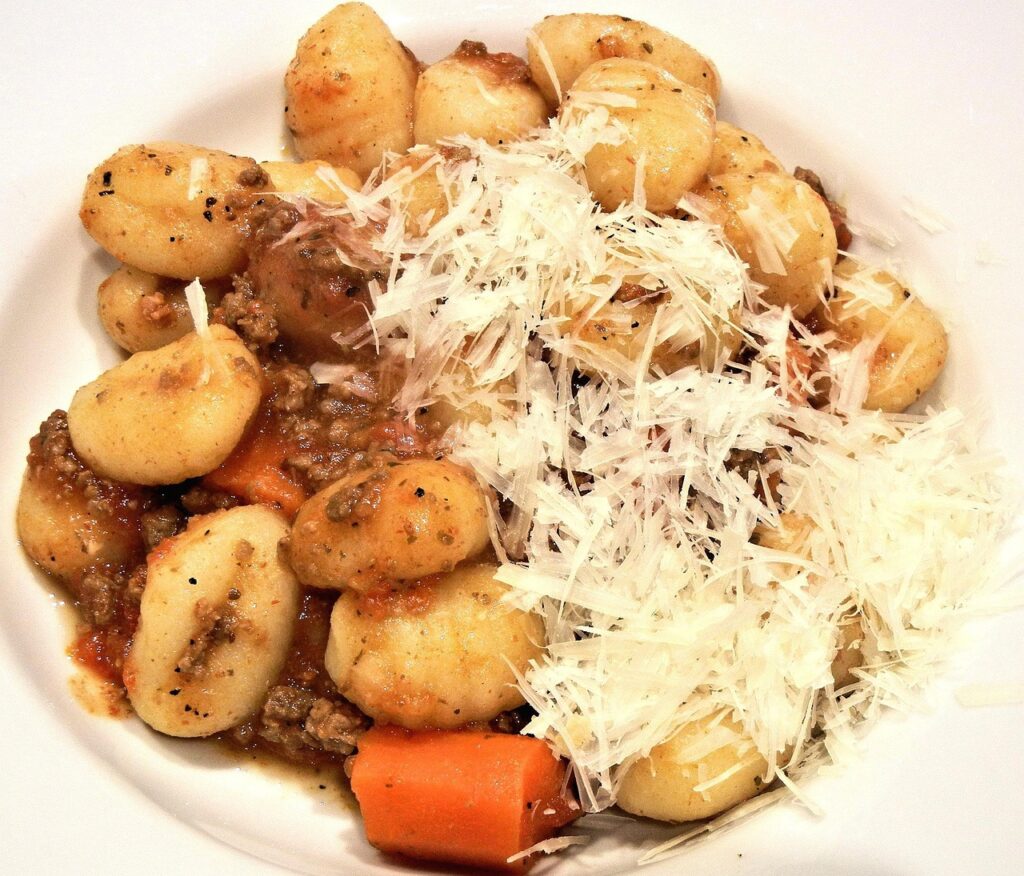
Soft, pillowy potato dumplings, gnocchi are a comfort food classic. They can be paired with a variety of sauces, from sage-infused brown butter to hearty tomato ragù. The trick to perfect gnocchi is handling the dough gently to keep it light, avoiding a dense texture. In Italy, you’ll find regional takes, like Roman semolina gnocchi or pumpkin variations in the north. Gnocchi di patate in a creamy gorgonzola sauce is pure indulgence, while a lighter pesto version sings of summer. However they’re served, gnocchi embody that Italian gift of turning humble ingredients into something extraordinary.
9. Caprese Salad
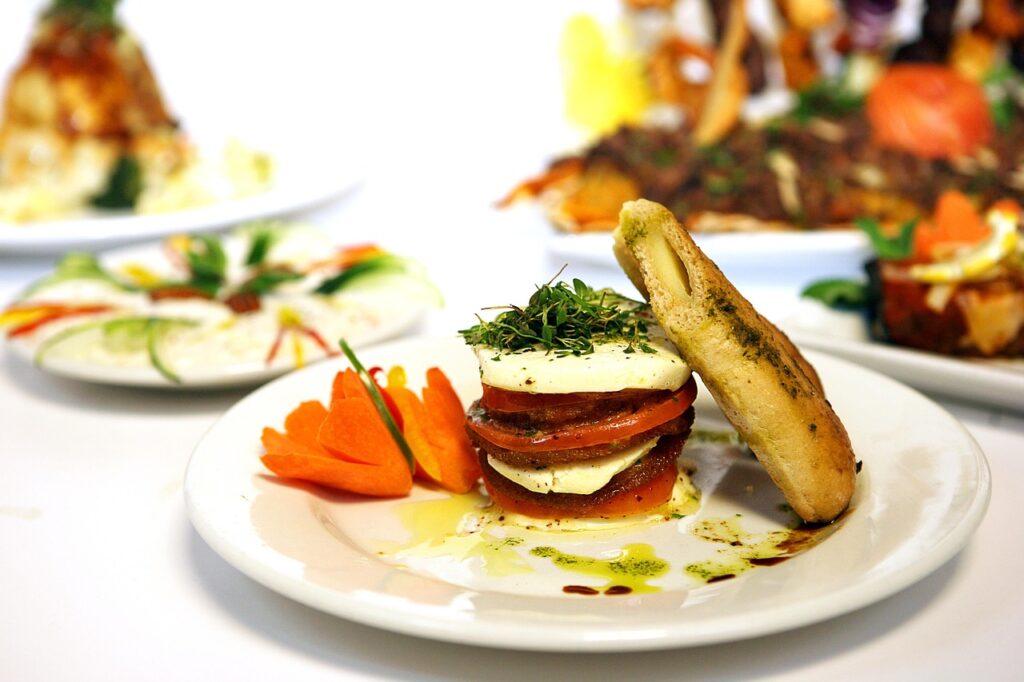
Named for Capri, this salad embodies pure freshness. Thin slices of ripe tomatoes, creamy mozzarella, and fragrant basil are drizzled with extra-virgin olive oil and sprinkled with salt. Simple yet elegant, the dish relies on the highest quality ingredients to shine; no heavy dressings needed. Caprese is a celebration of seasonality, often enjoyed as an appetizer or light meal. At its best in peak tomato season, it captures summer on a plate with every vibrant bite.
10. Saltimbocca alla Romana

This Roman specialty translates to “jumps in the mouth,” and for good reason. Thin slices of veal are topped with prosciutto and sage, then cooked in butter and white wine until tender. The result is a savory, aromatic dish that’s surprisingly quick to prepare. The combination of salty prosciutto, earthy sage, and rich pan sauce creates a burst of flavor in every bite. While veal is traditional, some modern versions use chicken or pork. Saltimbocca captures the essence of Roman cooking; simple techniques, high-quality ingredients, and flavors that linger long after the meal is over.
11. Polenta

Polenta is a northern Italian staple made from slow-cooked cornmeal. Creamy when freshly cooked, it can also be cooled, sliced, and grilled or fried. Its mild flavor makes it the perfect base for rich meat stews, roasted vegetables, or melted cheeses. In the Alps, it’s often paired with hearty mushroom sauces or game meats. Polenta reflects Italy’s resourceful approach to cooking; turning an inexpensive ingredient into a versatile, satisfying dish. Whether served rustic-style in a big communal pot or plated with finesse in a fine restaurant, it’s a comfort food that bridges past and present.
12. Arancini

Golden, crispy arancini are one of Sicily’s most beloved street foods. Made from specially prepared rice rather than just leftovers, these filled balls are packed with ingredients such as ragù, mozzarella, or peas, then breaded and fried to perfection. The outside crunch yields to a warm, savory center that comforts instantly. Shapes vary by region: some are round, while in eastern Sicily cone-shaped versions honor Mount Etna. Whichever style, arancini are tradition wrapped in a delicious crust.
13. Pesto alla Genovese
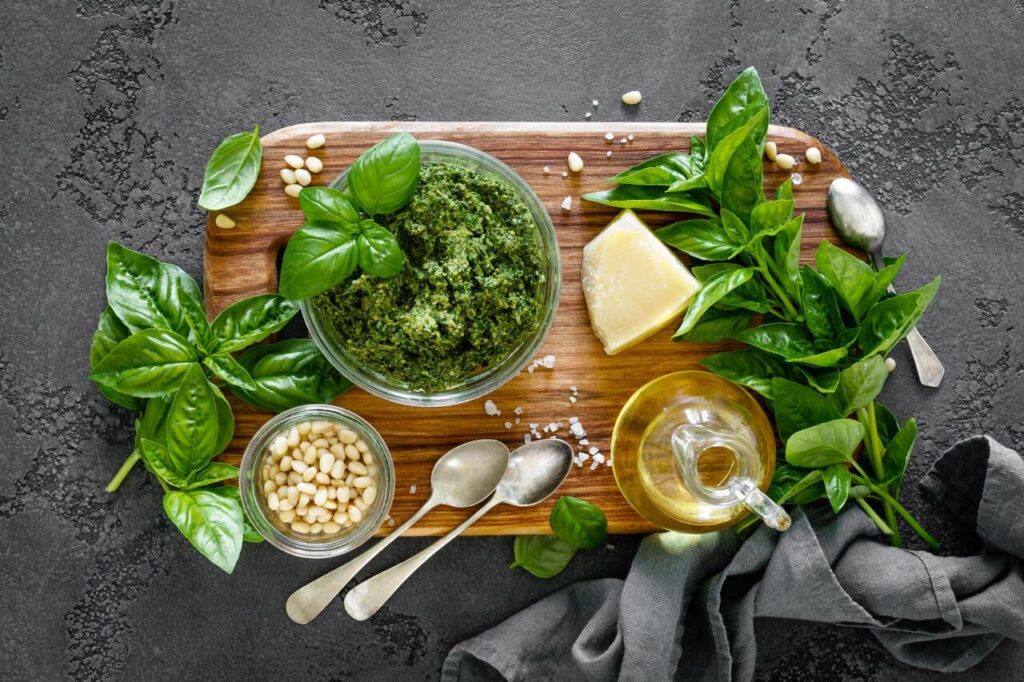
From the coastal region of Liguria, pesto alla Genovese is a fragrant sauce made with fresh basil, garlic, pine nuts, Parmesan, and olive oil. Traditionally pounded in a mortar and pestle, it’s now often blended for convenience. The key is using fresh basil and high-quality olive oil to achieve a bright, herbal flavor. Pesto pairs beautifully with pasta, especially trofie or trenette, but it’s also delicious spread on bread or drizzled over vegetables. This sauce is proof that a handful of fresh ingredients, treated with care, can create something extraordinary and endlessly versatile.
14. Tiramisu
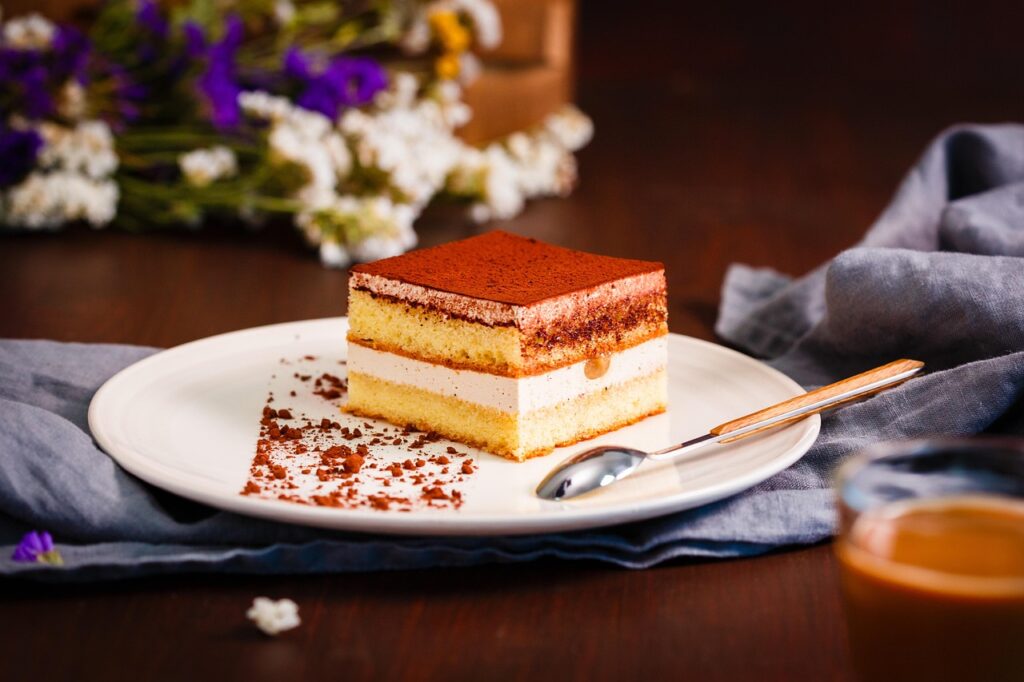
Italy’s most famous dessert, tiramisu, layers espresso-soaked ladyfingers with mascarpone cream and a dusting of cocoa powder. Its name means “pick me up,” a nod to the caffeine and sugar boost it provides. Originating in the Veneto region, it’s a perfect balance of bitter coffee, sweet cream, and airy texture. While classic tiramisu is unbeatable, variations with fruit, chocolate, or liqueur offer creative twists. Served chilled, it’s the ideal way to end a meal; light yet indulgent. This dessert has become a global favorite, but its soul remains deeply Italian.
15. Gelato

Gelato isn’t just Italian ice cream; it’s denser, silkier, and often more flavorful due to its lower fat content and slower churning process. Flavors range from classic pistachio and stracciatella to seasonal fruits and inventive combinations. The texture is rich and creamy, melting slowly on the tongue. In Italy, gelaterias take pride in using fresh, natural ingredients, and you can often watch the gelato being made. A scoop (or two) enjoyed while strolling through a piazza is as much a cultural ritual as it is a dessert. Gelato is the sweet finale to any Italian food journey.


